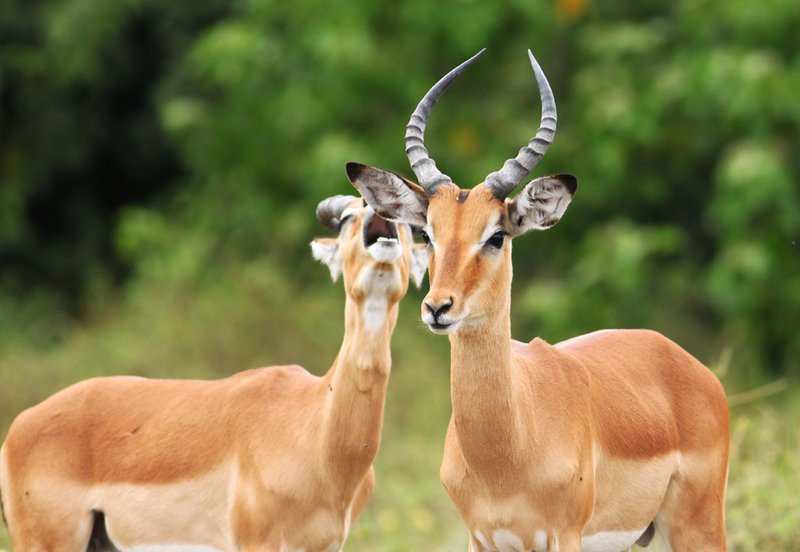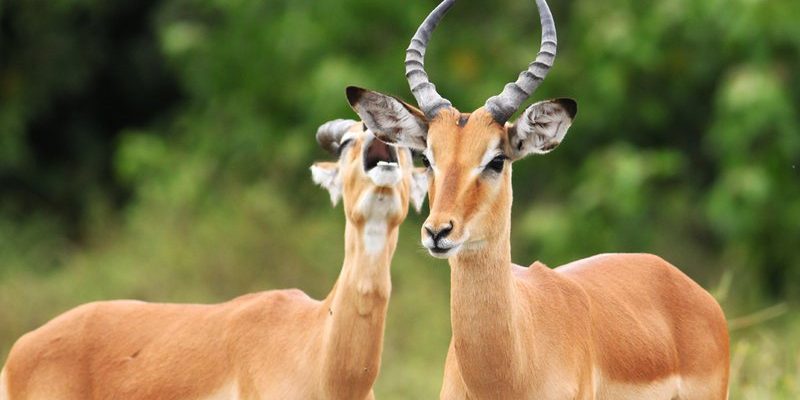
Raising young impalas isn’t just about survival; it’s about teaching them the skills they’ll need to thrive in a world filled with predators. Imagine a parent trying to teach their child how to navigate through a busy city—each lesson learned is a step toward independence. In the same way, mother impalas employ unique methods to ensure their fawns grow up healthy and strong. So, how do impalas manage this delicate balance in such a challenging environment? Let’s take a closer look.
Understanding Impala Social Structure
Strong family bonds play a crucial role in how impalas raise their young. Female impalas usually live in groups called herds, which can range from a handful to several dozen. These herds are essential for safety in numbers. While the adult females are often busy foraging for food, the presence of other mothers in the herd allows for a sort of communal babysitting.
Mother impalas tend to form close relationships with their offspring. You might say they have a “village” mentality. This social structure benefits the young by offering them guidance and protection. Isn’t it comforting to know that even in the wild, a little collaboration can go a long way? If a predator approaches, the herd can alert each other, increasing the odds of survival for the young fawns.
The Birthing Process
When it comes to giving birth, impalas prefer to do so in a safe and secluded spot. They often seek out tall grass or dense bushes, offering a natural shield from predators. The birthing process is usually quick, which is good news for the mother and her newborn.
Once a fawn is born, the mother spends time licking it dry—this helps the fawn bond with her and get its first nutrients from her milk. Honestly, this initial care is incredibly important, as it sets the stage for the fawn’s survival. The moment a fawn stands up and takes its first steps is a beautiful sight, much like a toddler taking their first steps. In just a matter of hours, the little one is on its feet, ready to explore the world, all while staying close to mom.
Mother Impala’s Protective Instincts
After giving birth, a mother impala is fiercely protective of her fawn. You might be wondering how she keeps it safe. First off, she often hides the fawn in dense vegetation while she goes off to graze. This strategy minimizes the chances of a predator spotting the vulnerable baby.
However, she doesn’t leave her fawn unsupervised for too long. You can imagine how a mother would constantly check in on a child playing in the backyard. Similarly, mother impalas return frequently to nurse and stay close to their fawns. It’s this blend of caution and care that helps keep the little ones safe. As they grow, fawns start to develop their own awareness of their surroundings, thanks in large part to their mother’s guidance.
Teaching Survival Skills
Once the fawns are a bit older, the real fun begins. Mother impalas start to teach their young essential survival skills. This might include showing them how to forage for food and where to find water sources. Think of it like teaching a teenager how to cook or manage a budget—these lessons are foundational.
For instance, a mother may lead her fawn to a safe grazing area, demonstrating which plants are safe to eat. You could say this is their version of “food education.” The fawn learns by watching and mimicking its mother. The more time they spend together in these learning scenarios, the better equipped the young impalas will be as they venture into adulthood.
Social Learning Among Young Impalas
Young impalas don’t just learn from their mothers; they also pick up skills and behaviors from other young impalas in the herd. This social learning is vital, as it creates a supportive environment where the young can practice and refine their skills.
Imagine a group of friends all learning to play a new sport together. They share tips, encourage one another, and even compete in a friendly way. In the same manner, young impalas engage in playful sparring, which helps them develop strength and agility. This playful interaction not only sharpens their skills but also fosters bonds among peers, preparing them for the challenges ahead.
Facing Predators Together
One of the harsh realities of life in the wild is the constant threat of predators. Impalas have several natural enemies, including lions, cheetahs, and hyenas. You might think, “How do mother impalas keep their young safe in such a dangerous environment?” The answer lies in the herd’s cooperative strategies.
When a predator is spotted, the entire herd works together to create a distraction. Some impalas will make loud alarm calls, while others may scatter in different directions, confusing the predator. It’s like a strategic game of defense. Young fawns benefit from this teamwork, as it increases their chances of survival. The lessons learned in dealing with threats are invaluable, ensuring they remain alert and prepared for future dangers.
The Journey to Independence
As fawns mature, they gradually gain independence. The transition is often subtle, as they begin to forage on their own while still staying close to their mothers. It’s similar to a teenager starting to spend more time with friends and less time under parental supervision.
By the time they reach about six months old, fawns are usually capable of surviving on their own. Mother impalas instinctively know when it’s time to step back, allowing their young to venture out confidently. This stage of independence is vital for young impalas as it prepares them for adulthood, ensuring they can thrive in the wild without constant supervision.
Watching how impalas raise their young is a reminder of the beauty and complexity in the animal kingdom. From their protective instincts to the communal bonds within herds, these graceful creatures demonstrate resilience and resourcefulness. Their methods of nurturing their young are not just about survival; they’re about teaching essential life skills that ensure the next generation can thrive in the wild.
In a world where dangers lurk behind every bush, the support of family and community can make all the difference. Impalas may seem simple at first glance, but their approach to parenting offers insightful lessons for both nature lovers and anyone interested in wildlife. So, next time you think about the wild, remember the impalas and their beautiful journey of raising their young.

